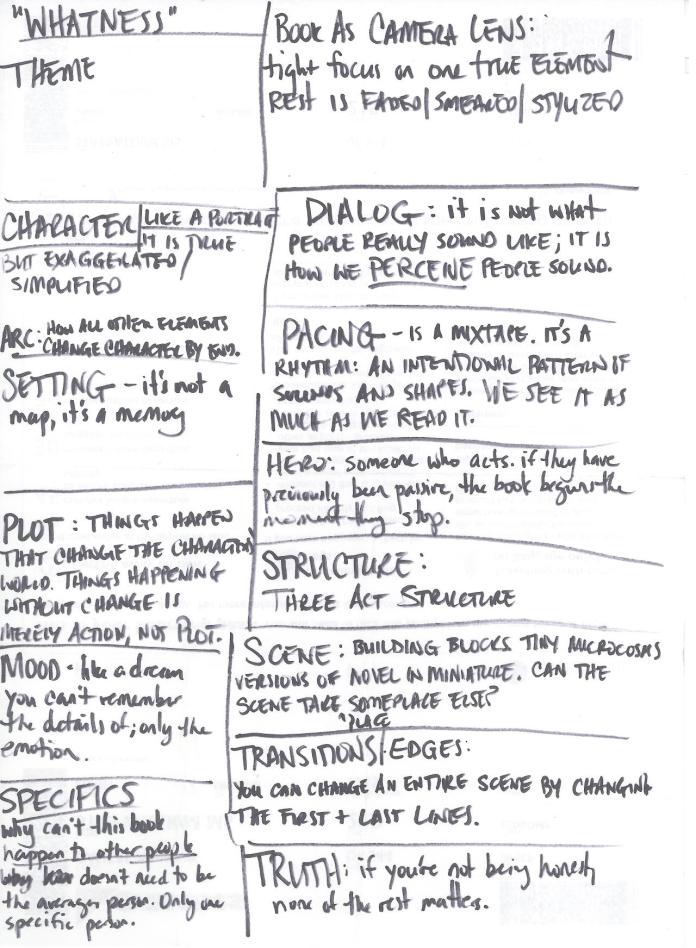Plotting my next novel is going really well. So far I have the First Act pretty much sorted, and I’m now running through possibilities for the Third Act. Once I’ve worked out how the novel will end, and how my heroine will ultimately “defeat” the bad girl, then planning Act Two will be a breeze – I’ll know exactly what she needs to go through, learn and obtain in order to “win”.
In case you’re wondering, my next story will be a contemporary fantasy adventure with a very strong quest-like feel. Of course, for me, writing such a book was inevitable, given the sorts of things I loved doing as a child – reading Norwegian folktales, playing King’s Quest games on my Atari ST, watching videos of my favourite fantasy films over and over again (eg. Labyrinth, The Neverending Story, The Last Unicorn, Willow, The Princess Bride, etc).
To assist me in my endeavour to plot the most awesome YA fantasy adventure ever, I’m studying various plotting techniques, including those used for writing scripts and even role play games, as well as how they apply to some of the most amazing movies out there today.
So far I have come across three methods that blow me away:
(i) Dramatica Theory
The Dramatica Theory of Story Structure is a diagnostic modelling tool built around a concept called “The Story Mind.” According to this notion, every story has a mind of its own – its psychology is built by the story’s structure and its personality is determined by the storytelling.
According to Glen C. Strathy HERE, Dramatica Theory sees every story as an attempt to solve a problem or rebalance an inequity. The theory shows you how to address all aspects of plot, theme, and character in order to create a consistent and emotionally compelling message for the reader.
As you might have guessed, the Dramatica Theory is very complex. Thankfully, HowToWriteABookNow.com breaks the theory down into an awesome 10-part preparation guide HERE, including:
- Creating a Plot Outline in 8 Easy Steps;
- Plot Development: Climax, Resolution, and Your Main Character; and
- Creating Archetypal Characters.
Also on HowToWriteABookNow.com, there is also a list of other story models (and a comparison of them to The Dramatica Theory) HERE you might be interested in checking out. Overall, HowToWriteABookNow.com is a really great website with lots of useful resources and articles.
(ii) Dan Wells’ 7-Point System
I have to admit, when I first watched Dan Well’s 5-part video HERE, I got excited. It was the first time I’d seen plot structure explained to me in a way that made plotting seem easy. Essentially his plotting system, which he says is based on the Star Trek Role Playing Game Narrator’s Guide, encompasses 7-points:
1. Hook
2. Plot Turn 1
3. Pinch 1
4. Midpoint
5. Pinch 2
6. Plot Turn 2
7. Resolution
The two pieces of advice I found the most helpful in his videos were (i) know your ending before you start, and (ii) make sure the starting point is opposite to the ending point.
Karen Woodward has a really great series of posts on Dan Well’s system starting HERE.
(iii) Blake Snyder’s 15 Beat Method
I’ve saved this method for last because it is (in my very humble opinion) by far the best. I’ve just finished reading Blake Snyder’s “Save the Cat” and I have to say it is the Holy Grail of how-to-write books. Even though it relates to writing scripts, its advice is just as applicable to novel writing.
In “Save the Cat”, Snyder discusses genre, loglines, heroes, story boards, screenplay physics and quick fixes. He also outlines the 15 beats found in successful movies:
1. Opening Image
2. Set-up
3. Theme Stated
4. Catalyst
5. Debate
6. Break Into Two
7. B Story
8. The Promise of the Premise
9. Midpoint
10. Bad Guys Close In
11. All is Lost
12. Dark Night of the Soul
13. Break Into Three
14. Finale
15. Final Image
Honestly, anyone who is seriously into plotting should get a copy of “Save the Cat” and carry it with them everywhere!
Lydia Sharp has a series of amazing posts that analyse and apply Blake Snyder’s 15 Beat Method. You can search her blog HERE.
I also found a great webpage Worksheets for Writers HERE where you can download BS2 worksheets adapted for novels.

Image by jannoon028 – http://www.freedigitalphotos.net
Anyway, I won’t go into any more detail than this as the websites and books I’ve listed above explain things better than I ever could (plus if I let myself, I could probably write about it for days – days that really should be devoted to plotting). I’ll just say that if anyone wants to learn more about plotting and the different ways to go about it, then I definitely recommend checking out these three methods.
I, myself, will be keeping all three in mind while I deliberate the fate of my characters.
One thing I really love these days is that when I am watching TV shows or movies I actually feel like I’m working, because as I watch I’m actually looking for inciting incidents and catalysts, midpoints and dark nights of the soul. I’m learning while being entertained. Pretty neat, huh?






